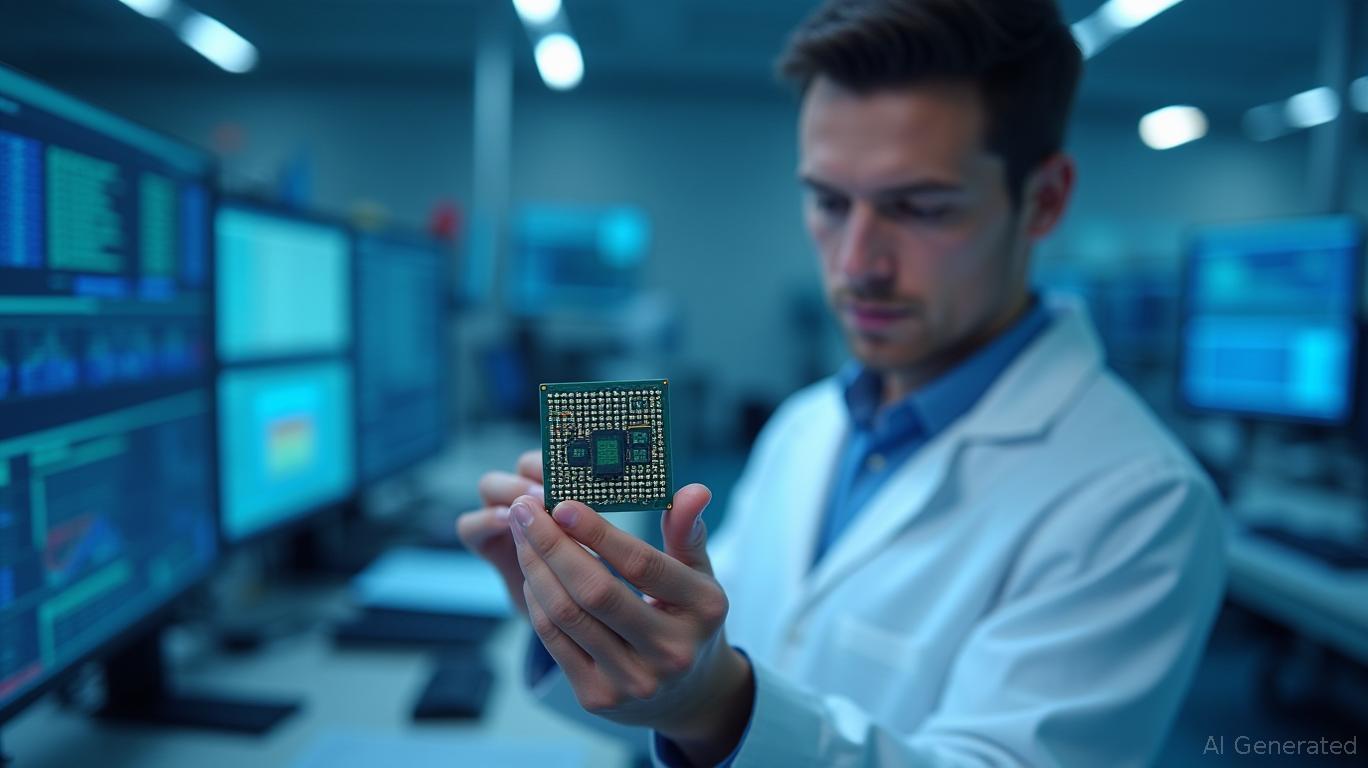AInvest Newsletter
Daily stocks & crypto headlines, free to your inbox
Broadcom's second-quarter earnings report delivered a masterclass in AI-driven growth, positioning the company as a pillar of next-generation data center infrastructure. With AI semiconductor revenue surging 46% year-over-year to $4.4 billion and Tomahawk 6 switches leading the co-packaged optics (CPO) revolution,
is not just riding the AI wave—it's redefining its contours. The question now is: Can its hybrid semiconductor-software model justify its premium valuation, and what risks lie ahead?Broadcom's Q2 results were a stark reminder of its strategic acumen. Revenue hit $15.0 billion, a 20% year-over-year jump, with AI-related sales accounting for nearly 29% of total revenue. Non-GAAP EPS rose 44% to $1.58, while free cash flow soared to $6.4 billion, a 44% increase. These figures underscore why analysts at HSBC recently upgraded the stock to a buy with a $400 price target—a 25% premium to its current price.
The real story, however, is the AI trajectory. Management projects Q3 AI revenue to hit $5.1 billion, marking ten consecutive quarters of growth. CEO Hock Tan emphasized that hyperscalers are “accelerating capital expenditures” for AI infrastructure, a trend Broadcom is uniquely positioned to capitalize on.
At the heart of Broadcom's AI infrastructure play is the Tomahawk 6 switch series, which delivers 102.4 terabits per second (Tbps) of throughput—double the capacity of its predecessor. Its integration with CPO technology, which embeds optical components directly into silicon chips, is a game-changer. This reduces latency, cuts power consumption, and addresses the bandwidth bottlenecks plaguing traditional data centers.
Partnerships are critical here. Broadcom collaborates with firms like Delta Electronics (which adopted Tomahawk 6 for its AI servers) and Micas, whose routers leverage the switch's 224G SerDes lanes. These alliances are expanding CPO adoption in hyperscale data centers, where speed and efficiency are non-negotiable.

The CPO market itself is nascent but explosive. Analysts project it will grow at a 28% CAGR, reaching $1.45 billion by 2032. While the $5 billion+ milestone may not arrive until 2030, Broadcom's early leadership—backed by 25+ partners—ensures it will capture the lion's share of this growth.
Broadcom's dual focus on semiconductors and software (via VMware) creates a moat no pure-play competitor can match. Its infrastructure software segment grew 25% YOY to $6.6 billion, proving that AI isn't just about chips—it's about the ecosystems that manage them.
This hybrid model justifies its 38.7x forward P/E multiple, far above peers like
(33.9x). Unlike GPU-centric rivals, Broadcom's solutions span networking, storage, and virtualization, making it indispensable to enterprises building AI infrastructure.Broadcom's stock has surged 40% in three months, but its fundamentals remain compelling. With $9.5 billion in cash, a dividend yield of 0.5%, and plans to return $7 billion to shareholders annually, it offers both growth and stability.
Investors should focus on its CPO leadership, VMware synergies, and the AI market's structural tailwinds. While geopolitical risks and margin concerns are valid, the long-term opportunity—$90 billion in AI chip markets by 2027—is too vast to ignore. Historical performance supports this thesis: a strategy of purchasing
on its quarterly earnings announcement dates and holding for 20 trading days from 2020 to 2025 delivered an average return of 22.74%. However, this came with notable volatility, including a maximum drawdown of -28.58% in 2023 and a Sharpe ratio of 0.20, underscoring the need for risk-aware investing.Final Call: Hold or accumulate Broadcom as a core holding in tech portfolios. Its hybrid model and CPO dominance make it a “Magnificent 8” contender—a rare stock that bridges the AI hardware-software divide. Just keep an eye on margin trends and geopolitical developments.
Disclosure: This analysis is for informational purposes only and not a recommendation to buy or sell securities.
Daily stocks & crypto headlines, free to your inbox
Comments
No comments yet